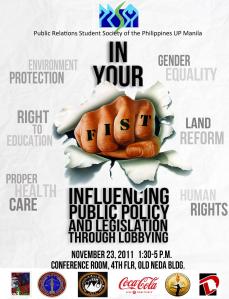The family is the most basic social institution. An ordinary person would not need any sociological or anthropological theory to be able to explain its importance in shaping one’s life and influencing his perception toward the world. It is the family that primarily influences a child’s attitude and beliefs because it is in the home, with his family, where he first learns the essential lessons in life. Hence, how he behaves in the society is a product of and an interplay with the values he acquires from his family.
The family is not just the smallest unit of society; it can also be considered as the smallest form of organization which may serve as a microcosm to its bigger counterparts – community, corporations and the government. The family, regardless of its size and composition, has hierarchy, resources, needs, goals and culture – things which are inherent to an organization. In this sense, one must understand the dynamics of family life in order to understand how it resembles with the more complex forms of organizations. Likewise, this resemblance tells us that one’s family life affects his dynamism or verve within his organizations and his attitude toward its members.
This does not mean, though, that one’s organizational life would be a replica of his family life. It also does not mean that the person one is in his family will be the same person one will become in his organization. This only means that a person, in his dealings within his organization, cannot get rid away of his family’s influence to his identity and personality.
Definitely, the family is just one of the many factors that affect a person’s performance and behavior in an organization. The society at large and his personal experiences also play a big role in the shaping of his character and philosophy in life. What is important to remember, though, is that wherever a person would be and whatever he will become, he owes a huge portion of his “self” to the institution where he first experienced life – his family.
